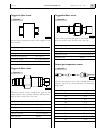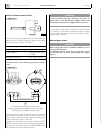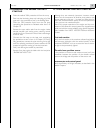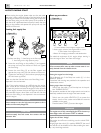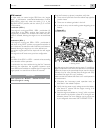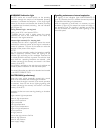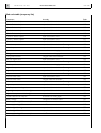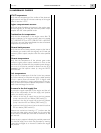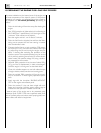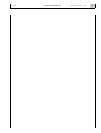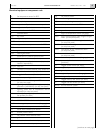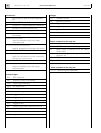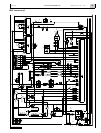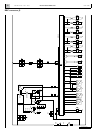
INSTALLATION DIRECTIVEMAY 2006
43
V08 ENT M75
-
M11
-
M12
18. UNDERWAY CHECKS
ECU Temperature
Verify that the temperature of the surface of the electronic
engine control unit, after 30 minutes underway at full engine
power, is less than +70°C.
Engine compartment vacuum
Verify that value of ambient air pressure in the engine room
with the engine(s) at full load and maximum power output
complies with the value specified herein.
Combustion air temperature
Verify that the temperature in the engine room, after 30
minutes underway at full engine power, does not exceed
45°C (V08 ENT M75) or 50°C (V08 ENT M11 e V08 ENT
M12) and, in any case, does not exceed the value of external
temperature by more than 15°C.
Exhaust back-pressure
Verify that the value of back-pressure present at the inlet of
the exhaust gas conduit, with the engine(s) at full load and
maximum power output, complies with the value specified
herein.
Exhaust temperature
Verify that the temperature of the exhaust gases under
maximum engine power output conditions is close to the
prescribed value; to determine the propeller power absorp-
tion curve, it will also be possible to obtain from the ECU
parameters the fuel injection values by using the IVECO
MOTORS tool.
Fuel temperature
Verify that the temperature of the fuel in the low pressure
line, while underway at full power and with a stable quantity
of fuel in reserve, does not exceed 70°C. A higher value
would entail a reduction in engine performance. If the ten-
dency to reach the maximum allowed temperature is noted,
install a heat exchanger for the fuel.
Pressure in the fuel supply line
To assure the regular operation of the engine and the reli-
ability of the components of the fuel supply and injection
system, you need to verify that:
o vacuum in the fuel oil supply line to the low pressure
pump is less than 0.5 bar relative (5000 mmH
2
O);
pressure in the fuel oil supply line to the low pressure
pump is less than 0.5 bar relative (5000 mmH
2
O);
o pressure in the fuel oil return line to the tank is less than
0.2 bar relative (2000 mmH
2
O).
Measures are carried out inserting a “T” junction near the
fuel inlet and outlet, taking care to avoid any air suction. Val-
ues are read at variable rpm, from idle to maximum, at 200
rpm intervals.
If there are any symptoms indicating the possible presence of
air in the fuel supply line, a check may be made by inserting
a clear tube, arranged as an inverted U, before the engine
inlet junction.



